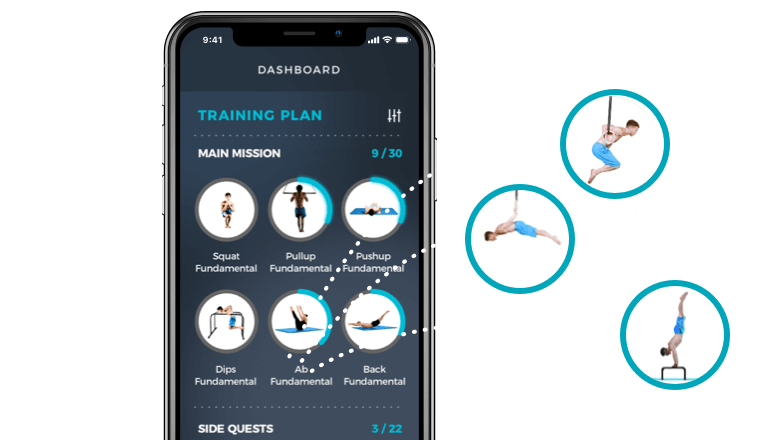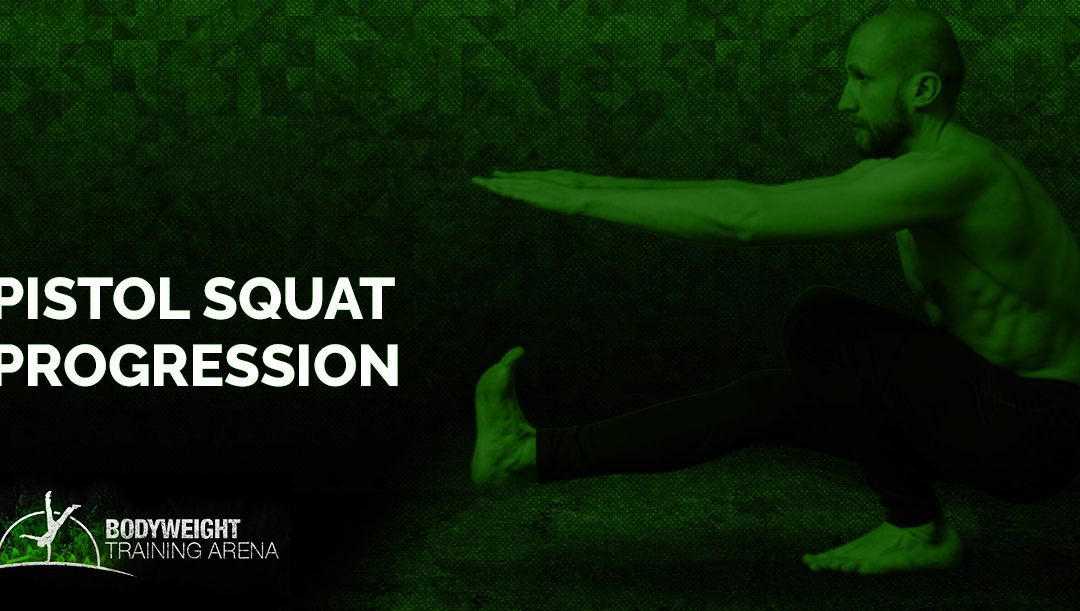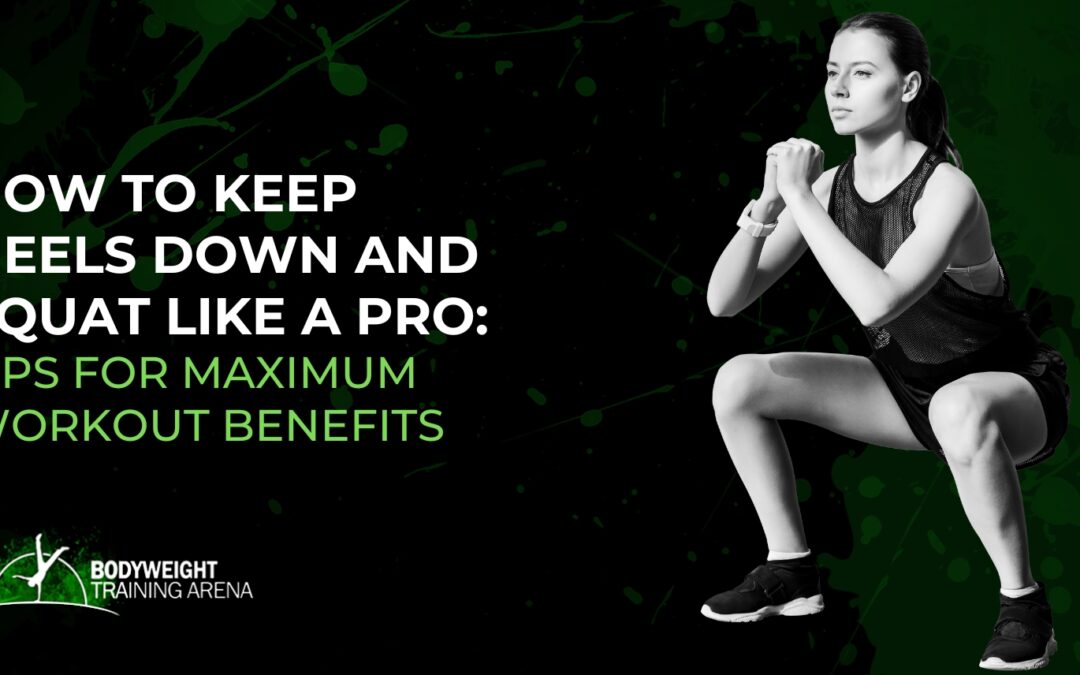Join the tribe of Movement & Calisthenics Athlete – people just like you that are working with their own body weight to get strength, lose fat build muscle, recover from injuries and live their best lives!
Join the tribe of Movement & Calisthenics Athlete - people just like you that are working with their own body weight to get strength, lose fat build muscle, recover from injuries and live their best lives!
I get asked all the time, how these two compare?
Can you build muscles with just bodyweight? How does it affect your joints? What are the differences?
So I went on and started writing an extensive comparison analysis. This is just a first part. And of course you can say that I am biased, but I did my best trying to be as objective as possible.
Would love to hear your comments and opinions. Also what are other questions you would want to be answered?
Section -1: Comparison between bodyweight vs weights lifting.
Body weight training is a type of exercise which doesn’t include the use of weight or any other specialized machine. In this type of exercise, the practitioner uses his or her own body to provide the necessary resistance for opposing the movements. [tweet_box design=”box_04″]Movements like pushups, sit ups and are the best weight training exercise. This type of training not only improves the endurance but also helps improve the strength of muscles. [/tweet_box]The endurance increases with the repetitions and strength improves by decreasing leverage and exercising at the end of the range or normal motion. [1] However, after a period of increase in muscle mass and improvement in shape, a person reaches a plateau beyond which there is not further progress. The reason being the body can provide only a definite amount of resistance. This method is more appropriate for beginners and those individuals who want to remain in shape without gaining excess muscle mass.
On the other hand, weightlifting focuses on the use of different specialized machines or weights to oppose the force generated by muscles during repeated movements. In this kind of exercise, the practitioner uses weights, in the form of dumbbells, weighted bars etc, to provide the resistance against movements. With repetition and increase in the weight, one can significantly increase the muscle mass. The resistance, in this case, can easily be increased by adding more weights. This method is appropriate for individuals who want to gain some serious muscle mass.
Though both methods can be combined for planning an effective training program but there are several reasons due to which you might want to choose between one of the two methods. Following are some difference that may help you decide in a better way:
- Convenience: Time is money. Most of the people make excuses like “If only I had time to hit a gym”, “If only the gym was close to my home”, “If only I could spare some time from my busy schedule”. The fact is you’ve to take out some extra time to go a gym, which sometimes can be very difficult. Body weight training, on the other hand, is more convenient as you can do it anytime, anywhere. Also you don’t need any special practice or specialized tools to perform this exercise.
- Progression: The concept of progression is different in both body weight training and weight lifting. In the case of weight lifting, you can achieve a higher level of progress by increasing the weights and by increasing the number of reps. In the case of body weight training, the quantity of resistance provided by human body is quite limited. So, you can achieve higher degree of results by increasing the number of reps or by increasing the intensity of your training. For increasing the intensity you can try more difficult exercises like
- Safety: Body weight training is safer as it doesn’t involve the lifting of heavy weights and doesn’t require any specialized training. Weight lifting sometimes becomes very dangerous as it can lead to muscle sprains, tendonitis (inflammation of tendons) and broken bones. Human body has got certain limits. In the case of weight lifting, the trainer pushed himself, at least sometimes, to the limits of what the body can endure. Too much tension can lead to the tear of muscles, ligaments and tendons. Movements in wrong direction may cause muscle sprains and joint damage. Too much stress on the joints may cause intense pain.
- Flexibility of movements: The types of movements you do with weights are dictated by gravity. Provided the fact that resistance against movements is strongest straight down. This limits your movements during weight lifting. Body weight exercise can be done in variety of positions and postures giving you a wide range of choice and flexibility of motion.
- Building muscle mass: Both methods can lead to an increase in the muscle mass, but the increase in the muscle mass is more significant with body building. So, how to gain muscle mass with body weight? The deficiency posed by limited body weight can be compensated by doing increasing the number of reps and by increasing the intensity of training. In the case of weight lifting, it can simply be done by adding weight or doing more reps.
- Final words- can both methods be combined? It’s has become very evident till the end of this section that each method has got its own pros and cons. So, combining both methods can do two goods:
- First, through this method you can use to inherent advantages of both methods to your advantage.
- Combining both methods will minimize the side effects seen with the excess of a single method.
| Differences | Body weight training | Weight lifting | |||
| Increase in muscle mass | Less | significant | |||
| Effect on joints | Makes the joints more aligned and makes the movements easy | Makes the movements easy but also increase the chances of joint damage | |||
| Hormonal disturbance | Less marked | More marked. Significant changes in the level of testosterone and other stress promoting hormones. | |||
| Safety | safer | Less safe. More chances of injuries. | |||
|
More flexible; provides liberty of motion |
|
|||
Muscles involved |
A single exercise usually involves greater number of muscles. E.g. pull ups include the muscles of arms, chest, shoulders and back. |
Each exercise focuses on particular set of muscles. E.g. bench presses focuses on the muscles of chest. |
Section-2: Affect of body weight training and weight lifting on human body.
- Muscle affected by both exercises:
Body weight training affects all the muscles of your body from head to toe. Weight lifting is mainly focused on particular muscle. But you can use different exercises to involve different muscles. Different weight training and weight lifting exercised can be used to focus muscle like:
- Biceps: If you want to work out your biceps then the most effective body weight exercises include pushups and pull ups. While doing pull ups, try to lower yourself with the help your muscles, not the gravity. Working out your biceps through weight lifting includes the performance of bicep curls with the help of dumbbells.
- Triceps: Triceps are weaker muscles as compared to biceps. You can work these muscles using weight training exercises like chin ups and dips. With weight lifting you can work your triceps with triceps kickbacks and extension using dumbbells.
- Chest: Pull ups, pushups, dips and chin ups are all effective if you’re interesting in working your pectoral muscles through body training. Bench presses and flyes, when performed on a pec deck machine, put more emphasis on chest muscles.
- Shoulders: The best weight training exercises for shoulder muscle include press ups, pushups, hand stand pushups, plank and burpee. You can work your shoulders through several weight lifting exercises like dumbbell shoulder exercise, ball shoulder exercise, barbell shoulder exercise, strength shoulder exercise and band shoulder exercise.
- Back: The major muscle of the back is latisimus dorsi and the body weight exercises involved in the working of this muscle include chin ups (majorly), pull ups and dips. The weight lifting exercises involved in the working of back include dumbbell and machine rowing.
- Legs and hips: Squarts, calf raises and lunges can be used to work the legs and hips in body weight training. In weight training, you can use exercises like leg presses.
- Abdomen: You can work your abdomen using body weight exercise like crunches and weight lifting exercises like machine crunches.
- Affect on joints:
Both type of exercises focus on the movement of different parts of body on multiple joints. The effects of both exercises on different joints are given as follows:
- Body weight training: Body weight training makes use of the body’s own weight to exercises different group of muscles and joints. This method is more “natural”. The joints of human body are held in place by several muscles, tendons, ligaments and connective tissues. Human body works on the principle of “use it or lose it”. If you do regular body weight training exercises then you make your muscles, tendons and ligaments tense and healthy. It results in keeping the joints in perfect alignment and helps reduce the age or other disease related damage of joints. A regular body weight exercise puts mild degree of stress on the joints. The joints, as a response, become stronger and better able to withstand the stress.
- Weight lifting exercise: Weight lifting exercises strengthen the joints of the body based on the same principles as the body weight exercises. In a study released in October 2006 issue of arthritis care and research, an experiment was performed on a total of 221 older adults. One group did regular “range of motion” exercises for 30 months. The other group did strength training (weight lifting) exercises for 30 months and results were recorded.
“The strength training group retained more strength and exhibited less frequent progressive joint space narrowing over 30 months than the range of motion group.”
(Effects of strength training on the incidence and progression of knee osteoarthritis.)
However, too much strength training or weight lifting can lead to the abnormal deposits of calcium in the tendons of the joints leading to extremely painful joints. As Tsur A and Loberant N discovered during a case study:
“Tension overload in overhead and external rotation movements of the arm, during strength training, can help us to discover eventual supraspinatus calcified tendonitis.”
(Strength training can help us to discover calcified tendonitis in the shoulder.)
Section-3: Long term effects of body weight training and weight lifting on body muscles:
Following are the long term effects of body weight and weight lifting exercises:
- Body weight training: Long term effects of the body weight exercises on the muscle health include mild increase in the muscle mass and greater muscle strength. A research was performed on 27 untrained healthy elderly individuals in the Friedrich-Schiller University Jena, Jena, Germany. In this research, the elderly individuals completed 10 months of large leg muscle body weight exercises without using any external weight. The results showed that:
“A training program using body weight can be substantially effective in improving lower limb muscle force and power in elderly individuals; however, the initial training status is important for progressive increase in muscle force”
(Effects of body weight-based exercise training on muscle function of leg multi-joint movements in elderly individuals.)
A question might pop into your mind: “what will happen if I give up body weight training?” The answer is quiet simple; when you do regular exercise your body undergoes intense adaptation-especially your skeletal muscle. This adaptation is in response to the continuous stress and exercise. So, if you remove the stimulus, exercise, then the adaptation will also disappear. Body weight training is basically focused on making your muscles lean and toned. It doesn’t cause significant increase in the muscle mass. So, giving up body weight training can cause decline in the muscle tone with little or no change in the muscle mass.
- Weight lifting exercises: Weight lifting is basically focused on improving the muscle mass. There is a significant increase in muscle mass as you do regular weight lifting. This increase in the muscle mass is as the result muscle hypertrophy because of a process known as “adaptation”. As you do weight lifting, body responds to this stress by causing an increase in the neuromuscular connection, improving the blood supply to the muscles and increase in the length and thickness of individual muscle fiber. But, what happens when you give up weight lifting? This question can be answered by a simple example. For example you go to a foreign country and learn the language of that country. You get good at speaking that language. But then you get back home and start speaking your native language. You’ll gradually start to lose your grip over the foreign language. Same happens when you give up weight lifting. Muscle growth during weight lifting is like a three legged stool; one leg being proper sleep, second being proper nutrition and third being consistency. Break one leg and you’ll never be able to sit on that stool. Leaving weight lifting causes significant reduction in the muscle power and mass. Another important change is the heart adaptation, since heart is also made of muscle fibers. Regular weight lifting increases the pumping ability of your heart and hypertrophy of heart muscles. But, decrease in weight lifting may cause the heart come back to its original “pre-training” form.
Section -4: Miscellaneous long term effects of body weight lifting and body weight training:
Other long term effects of weight lifting include:
- Putting regular stress on your bones causes them to grow stronger. This can be effective in the treatment of osteoporosis (bone loss).
- Working your muscles increase their ability to use glucose. This can help decrease the elevated levels of glucose as seen in diabetes. It can also help normalize the levels of insulin.
- One major long term side effect of weight lifting is hormonal disturbance. It can elevate the levels of testosterone both in males and females and can, thus, cause baldness, development of male like characters in females and development of stress, depression and anxiety.
- It also puts greater stress of heart causing its hypertrophy. It can help increase the cardiac output and better perfusion.
- It also improves the level of HDL (good fat) and normalizes blood pressure.
- In a report published in 2009, it was revealed that weight lifting can decrease the incidences of lymphedema (swelling due to lymph obstruction) in females that have undergone breast removal.
- Regular weight lifting can cause a significant decrease in body fats.
The long term effects of body weight training include:
- Regular body weight training causes the release of several growth factors can cause significant increase in the neuronal connections, resulting in the improvement of cognition and brain health.
- Body weight training causes the release of dopamine in the brain. It can abate the symptoms of Parkinsonism- caused due to the decrease the levels of dopamine.
- This type of exercise also helps improve the health of heart. It also helps give you a healthy lipid profile i.e. decrease in the levels of low density lipoproteins (bad fats) and increase in the levels of high density lipoproteins (good fats).
- It helps normalize the levels of glucose.
- It helps normalize blood pressure and thus decrease the chances of risks like stroke.
- It helps burn extra fat.
Uff, That was a long article, Hope that gives you a better idea on how these two compare. The point is yes you can achieve all your goals with just bodyweight strength training.
What other questions are popping into your mind in terms of comparing these two? Comment below and we will add them on!
References:
- “The Fundamentals of Bodyweight Strength Training” Low, Steven (Mar 2010).
- http://www.bodyweightbasics.com/articles/bodyweight_vs_weights.html
- http://en.wikipedia.org/wiki/Bodyweight_exercise
- http://en.wikipedia.org/wiki/Weight_training#cite_note-ABCnews-33
- http://www.eatmoveimprove.com/2010/03/the-fundamentals-of-bodyweight-strength-training/
- http://www.livestrong.com/article/549800-long-term-effects-of-weightlifting-on-the-brain/
- http://www.ncbi.nlm.nih.gov/pubmed/19702936
- http://www.bodyweightbasics.com/articles/bodyweight_vs_weights.html
- http://www.livestrong.com/article/231384-what-is-better-lifting-your-body-weight-or-lifting-weights/
- http://www.livestrong.com/article/341709-bodyweight-training-vs-weight-training/
- http://www.livestrong.com/article/147390-bodyweight-exercises-vs-weight-training/
- http://www.livestrong.com/article/81349-bodyweight-vs.-weights/
- http://onlinelibrary.wiley.com/doi/10.1002/art.22245/pdf
- http://bmsi.ru/doc/001ea5e6-5358-44d3-b0ff-bbfb884f95da/print












I was curious to know what is the difference between the bodyweight vs weights so it’s great I found this amazing article which explains me everything I need to know about it. Author spent lots of time to write all these tips and I’m very grateful! Thank you very much! Which one do you like better – the bodyweight or weights?
i much prefer body weight workouts because I can do them anywhere, I am on the road travelling a lot so buying good quality weights would be a waste of money for me. Once you master calisthenics and body weights you have a 5 star gym with you at all times lol
You mention that bodyweight training doesn’t really affect your muscle mass but it does, you can get really muscular from bodyweight training you’ll never be like arnold but still pretty big. If you look at lazar from bar brothers or at the world championchips calithenics there are a lot of athletes who are muscular by bodyweight only.
A lot of misinformation in this article. Pullups primarily works your back. Straight-back dips primarily works your triceps, while dips being done while leaning forward works your chest. Chin ups primarily works your biceps. There are tons of bodyweight exercises you can do for various body parts. With the correct program, good nutrition plan, plenty of rest and a lot of dedication, you can build a very impressive physique without touching traditional weights. I don’t see muscle ups, diamond pushups, front levers, planches, etc. mentioned in this article. This list of advanced bodyweight exercises goes on and on. When pushups becomes too easy, elevate your feet. If that becomes too easy elevate your feet higher. When that becomes too easy go back to the original position and add weight or increase time under tension and advance as mentioned above. There will always be ways to make even the most basic exercise challenge in the quest to get stronger and adding muscle mass.